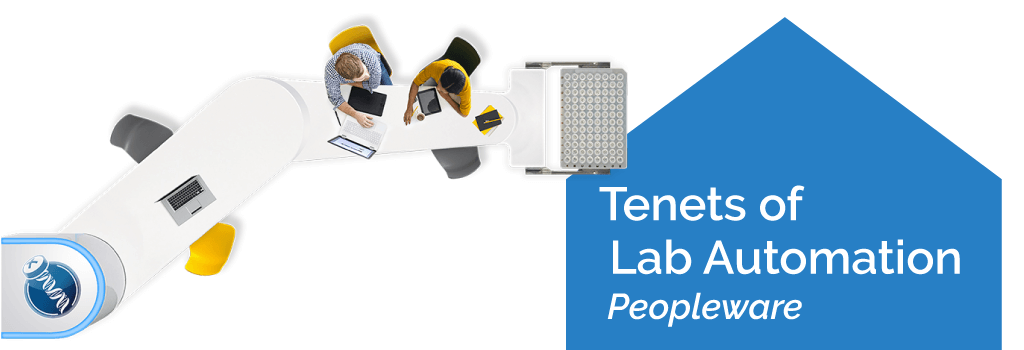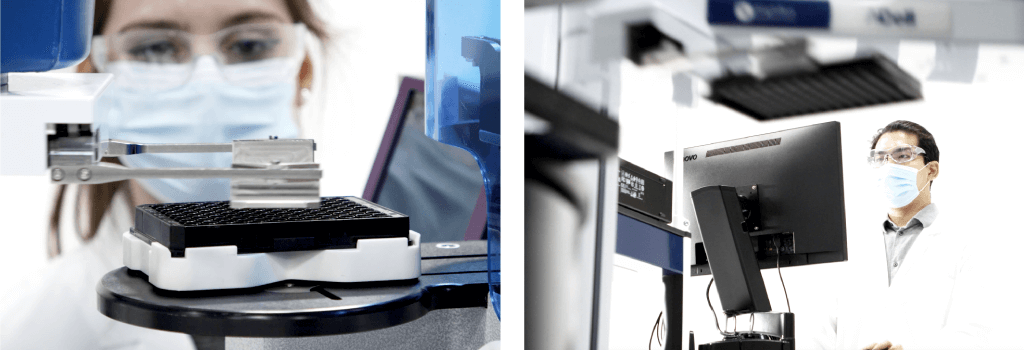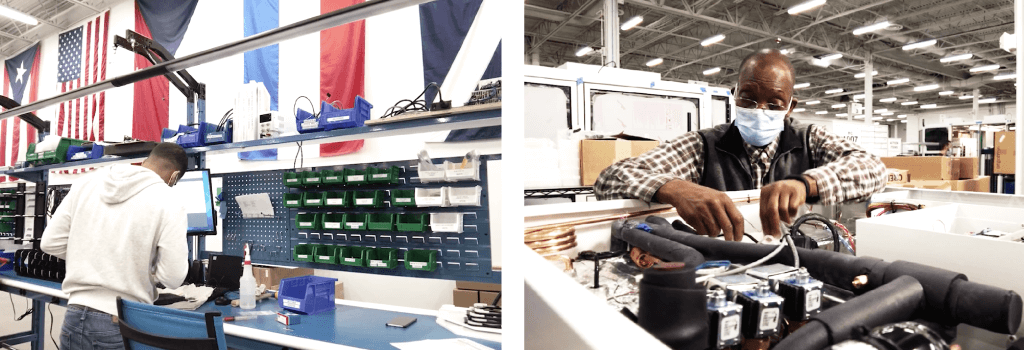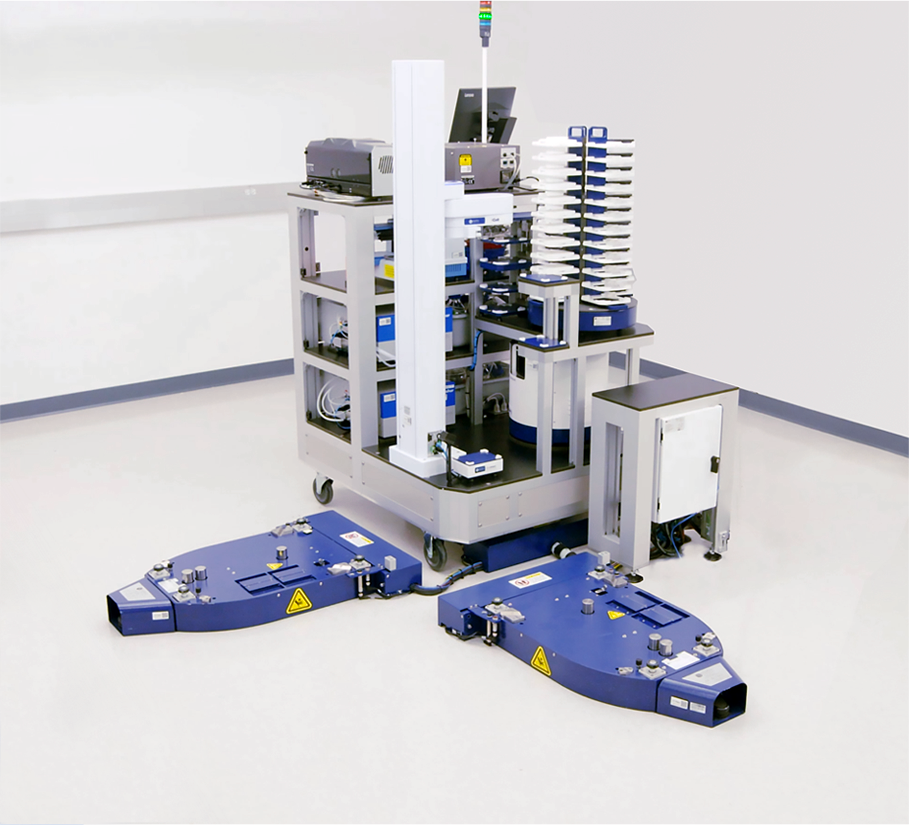
How People Fit into the Realm of Automation
Lab automation is a powerful tool that can help to reduce errors and improve efficiency. However, it is not a replacement for human expertise. People play a critical role in the design, development, and operation of automated systems, but let’s explore this further.
Even those new to automation should understand that a central automation benefit is taking people out of the workflow. This is because, by their very nature, people are variable. No two people in the world can pipette or perform other lab techniques identically. Even when evaluating one individual, they may perform differently in the morning versus the afternoon, or when they are stressed versus calm. Any number of physical, emotional, or environmental factors can impact human task performance.
This variability, along with human-based errors, can significantly skew resulting data and negatively impact or delay projects. On the other hand, automated systems perform tasks with a high degree of repeatability and reproducibility. This helps to ensure that the resulting data are as true as possible.
While laboratory automation effectively reduces the risks of human-derived variability and error, it also enhances productivity. Automated workflow systems facilitate increased throughput and reallocated labor resources. Instead of being a throughput-limiting factor and spending hours on low-value and repetitive tasks, researchers are free to attend to high-value tasks such as data analysis and interpretation while samples progress through the walkaway workflow. This helps to boost efficiency throughout the lab.
These benefits, however, do not mean that people should be completely removed from automation. To the contrary, people are key to a successful lab automation project. In fact, people join hardware and software as one of three central tenets of lab automation.

Automation Simply Isn’t Successful Without People
It’s crucial to understand that lab automation alone can’t guarantee success. Human expertise, critical thinking, ideation, planning, and complex decision-making capabilities are vital for successful lab automation. Unique skills and knowledge brought by humans, including broad-to-detailed scientific and assay knowledge, data analysis and interpretation, and the ability to create and adapt experimental design, are necessary to ensure successful data generation from automated platforms.
Therefore, the collective knowledge and skills of all team members complement the automated system’s hardware and software capabilities. This leads to enhanced productivity, accuracy, and scientific advancement.
People Guide Lab Projects and the Automation Journey
A lab project requires people to come up with “the big idea”, such as a novel screening platform to rationally design therapeutically relevant small molecules. Once the goal is set, people develop strategies against the goal. The strategies inform tactics that can be executed in whole or in part by leveraging automated workflows.
The same principle applies when bringing automation into the lab. People must make the decision to move from manual to automated workflows or expand from a semi-automated to fully automated workflow. Typically, this is done as a team with each member bringing their unique perspective. Multiple milestones in this process require opinions, evaluations, and feedback that can only come from people.
At the same time, people, in the form of expert product and service providers, can provide guidance to educate and inform the team members as they identify and develop an automated solution specific to the team’s project, budget, and goals. They can also help to understand subtle nuances in a process and create an automated growth plan in concert with the lab’s anticipated evolution. With communication top of mind, the right provider partner will be on hand throughout the automation project, from infancy through to installation and production.
People Excel at Development and Design
Automated devices and software don’t understand the underlying chemistry or overarching goals of a lab; they merely react to what humans program them to do without question. Therefore, automated systems rely on skilled individuals to design, run, and develop them.
People are also needed to ensure that the automated workflow design evolves over time in response to changing needs. This includes adding or enhancing hardware in a modular system.
From a software perspective, people, from engineers to programmers and scientists, create scripts and write code for all software programs in the automated system.
For even further expertise, labs can communicate their specific workflow requirements to dependable vendor partner experts with exceptional domain knowledge. These partners can also provide basic-to-advanced training so that the lab team can reap maximum utility from the automated system. This partnership ensures that the automated workflow yields maximize productivity, efficiency, and benefit to the lab.

People Oversee Support and Troubleshooting
Automated devices, such as our Prime automated liquid handler or TundraStore automated laboratory freezer and more, operate and perform tasks with extreme precision and accuracy. But just as any device with moving parts, they require regular preventative maintenance to ensure optimal operation and lasting performance. People can leverage device performance and health data to conduct preventative maintenance. This can range from daily checks to equipment calibration and replacing work parts.
If more technical or extensive issues arise, lab teams can communicate with the automated system integrators, specifically, those with extensive expertise in all the system’s devices and software. These experts utilize critical thinking to troubleshoot issues, identify root causes, and address necessary repairs. Their goal is to maximize the lab’s automated system uptime and facilitate copious data generation.

People Triumph Over Data Analysis
Human expertise still reigns supreme in the realm of data analysis. Advanced automated sample processing systems can easily generate terabytes or petabytes of data, but they don’t inherently know what it means or how to interpret it. In this regard, the human brain prevails.
In fact, while science has yet to truly understand the intricacies of how the human brain functions, this comparatively small and soft organ is orders of magnitude more powerful than even the most powerful software when it comes to interpreting data. As an extra bonus, for all its calculating power, the brain is eco-friendly, consuming about 12 watts of power. This is several times less than a computer running software.
The minds of researchers play a key role in understanding data as it relates to information, insights, and the big picture. The role of the automated system, then, is to generate data efficiently and reproducibly for humans to process.
People Influence and Adapt to Change
Automated laboratory systems are powerful tools, yet their power is ultimately dictated and bounded by humans. We’ve already talked about the role of people when it comes to experimental design. The same holds true when that design is optimized or changed to support innovation, explore new scientific trends, or improve efficiency. While great automated systems are modular, it’s up to the lab team, and their ability to direct adaptations, to decide to add, remove, or change a component of that system.
People Can Decide to Take the Next Step
People are an essential tenet of automation, as nothing can replace the awesome power of the human mind; the human mind is the ultimate powerhouse that drives lab automation. They provide the knowledge, skills, and creativity that are needed to design, develop, and operate automated systems. In addition, they can adapt to change and identify new opportunities for automation. As a result, people will continue to play a vital role in the future of lab automation.
When people from your team communicate with people from the HighRes team, great things can happen. Contact us today to learn how we unite hardware, software, and people into the pinnacle of your automated project success.
FAQs
How does automation enhance productivity in labs?
Automation reduces the time spent by researchers on low-value, repetitive tasks. This allows them to focus on high-value tasks like data analysis and interpretation. It also improves repeatability and reproducibility, reducing the risk of errors and skewing in data.
Can lab automation completely replace humans in the lab?
Although lab automation has many benefits, it cannot fully replace humans. This is because humans possess important skills such as critical thinking, planning, and complex decision-making that are crucial to the success of lab automation. Additionally, humans are needed to oversee tasks such as data analysis, troubleshooting, system design and development, and decision-making regarding changes and adaptations to the system.
How do people influence automated laboratory systems?
People play crucial roles in designing, running, and developing automated systems. They are also responsible for maintaining these systems and making necessary adjustments or repairs. Moreover, it’s people who decide when to add, remove, or change components in an automated system, based on the needs of the lab.
What roles are available in the field of lab automation?
In lab automation, there are various roles that serve different functions. Automation Engineers are responsible for designing, building, and programming automation solutions. Product Managers lead innovation and development, while Software Engineers program software for automation tools. Applications Scientists oversee the design of automated solutions to execute laboratory workflows. Lastly, Service Engineers maintain the performance of automation hardware.


